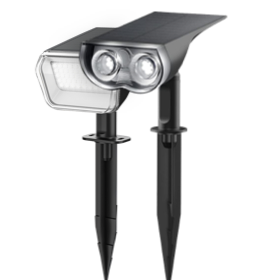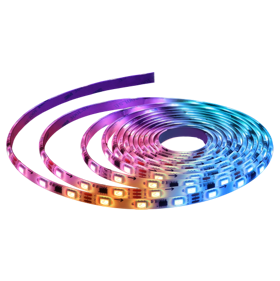E27 vs A19 Bulbs: Decoding the Differences for Smarter Lighting Choices
Confused about E27 vs A19 labels on bulbs? You're not alone—these terms, along with "A19 vs E26," are often mixed up! When shopping for lighting, the world of bulb specifications can feel like navigating a technical maze. Are you trying to replace a light bulb but feeling overwhelmed by these cryptic codes? Don't worry—this comprehensive guide will demystify the differences between E27 and A19, helping you make smarter, more informed lighting choices.

What is an E27 Bulb? (Base Type Explained)
The E27 bulb base, shorthand for "Edison Screw 27mm," is a standardized screw-type fitting widely recognized for its 27mm diameter. As one of the most common lightbulb types, it is named after Thomas Edison, who pioneered the screw-base design in the late 19th century. Known for its simplicity, reliability, and broad compatibility, the E27 base has become a global staple in lighting solutions.

Key Features & Technical Specifications of E27 Bulb
Diameter: Precisely 27mm, ensuring a snug fit in compatible sockets.
Voltage Range: Commonly used with 220-240V systems (standard in Europe and Asia), though low-voltage LED variants (12V/24V) also exist.
Materials: Typically features brass contacts for conductivity and heat resistance, paired with ceramic or plastic insulation.
Threads: Most E27 bases have 3-5 screw threads for secure attachment.
E27 Bulb: Regional Applications & Compatibility
Primary Regions: Dominant in Europe, Asia, Australia, and parts of Africa.
E27 vs. E26: The E26 (26mm diameter) is its North American counterpart. While visually similar, the 1mm size difference means they are not directly interchangeable without an adapter. Always check voltage compatibility (E26 uses 120V systems).
Alternatives: Contrasts with bayonet mounts (e.g., B22 in the UK) and smaller screw bases like E14 (common in chandeliers).
Popular Uses of E27 Light Bulbs
Smart Lighting: A favorite for smart bulbs (e.g., Philips Hue, LIFX) due to widespread adoption and ease of integration.
Decorative Fixtures: Ideal for pendant lights, where the secure screw base prevents loosening.
General Lighting: Used in lamps, ceiling fixtures, and outdoor luminaires for homes and businesses.
High-Power Needs: Supports bulbs up to 250W (incandescent) or high-lumen LEDs for industrial settings.
Benefits and Advantages of E27 Light Bulbs
Universal Compatibility: Fits most standard fixtures and dimmer switches (if bulb is dimmable).
Safety & Certification: Often includes CE marking, RoHS compliance, or ENERGY STAR ratings (for LEDs).
Energy Efficiency: Modern LED E27 bulbs consume 80-90% less energy than incandescent equivalents, with lifespans exceeding 15,000 hours.
Versatility: Available in globe, candle, vintage, and reflector shapes (e.g., A19, G125).
Practical Tips for E27 Users
Installation: Ensure power is off before screwing in the bulb. Avoid overtightening to prevent damage.
Voltage Checks: Verify your region’s voltage (e.g., 240V in the EU vs. 120V in the US) to avoid mismatches.
Dimmability: Confirm bulb and switch compatibility if using dimmers.
Eco-Friendly Choice: Opt for LEDs to reduce energy costs and environmental impact.
What is an A19 Bulb? (Shape & Size Demystified)
An A19 bulb refers to a specific light bulb shape and size classification that has become the standard in many residential lighting applications. Understanding this designation helps homeowners and designers make informed lighting decisions for their spaces.

A19 Designation Explained
A19 is a standardized code where:
- "A" represents "Arbitrary" shape, referring to the classic pear-shaped bulb design
- "19" indicates the bulb's diameter measured in eighths of an inch, equaling approximately 2.375 inches (60.3mm) at its widest point
Detailed A19 Bulb Specifications
Overall Height: Typically 4.13 inches (105mm)
Maximum Diameter: 2.375 inches (60.3mm)
Shape Profile: Distinctive pear-shaped silhouette with a rounded end and tapered neck
Base Types: Commonly features E26 (North America) or E27 (Europe) medium screw bases
Light Distribution: Provides omnidirectional illumination, casting light in all directions
Common Applications
A19 bulbs are versatile lighting solutions found in numerous household and commercial settings:
Residential Lighting: Table lamps, floor lamps, pendant fixtures
Ceiling Fixtures: Flush mounts, semi-flush mounts, chandeliers
Wall Sconces: Decorative and functional wall-mounted fixtures
Track Lighting: When omnidirectional light is preferred
General Ambient Lighting: Providing overall illumination for rooms
A19 vs. Other Bulb Types
Unlike specialized bulb shapes (such as PAR for directional lighting or candelabra for decorative fixtures), A19 bulbs offer the perfect balance of functionality and versatility for everyday lighting needs.
Energy-Efficient A19 Options
Modern A19 bulbs come in various technologies:
- LED versions (most energy-efficient)
- CFL (compact fluorescent)
- Halogen
- Traditional incandescent (being phased out in many regions)
Recommend A19 Bulbs – Linkind A19 Matter Light Bulbs
The Linkind A19 Matter Smart Light Bulbs are an excellent choice for those seeking A19 bulbs with advanced smart features. As part of the latest generation of matter light bulbs, they offer seamless integration with major smart home platforms like Alexa, Google Home, Apple HomeKit, and SmartThings, ensuring a more connected and convenient lighting experience.

-
Seamless & Stable Connectivity: Linkind smart bulbs feature dual Wi-Fi/Bluetooth for reliable control anywhere. Wi-Fi enables remote access; Bluetooth serves as backup. Quick 5-second reconnection after outages.
-
Matter-Enabled: Matter-compatible bulbs work with Apple, Google, Amazon & Samsung ecosystems. Control all from one app—schedule, dim, and create scenes easily.
-
Sync Lights to Music: Transform spaces with two sync modes—synchronized for uniform beat-matching or asynchronous for multi-color displays that respond independently to music.
-
Scene Modes: 104 presets and 16 million colors give complete creative control. Personalize any space with one tap for movies, gaming, or relaxation.
-
True-to-Life Colors: CRI 90+ ensures rich, natural tones. Adjust from warm 1,800K to crisp 6,500K daylight, or explore endless color options for any mood.
Key Features:
Dual Connectivity: Operates via Wi-Fi and Bluetooth for uninterrupted control without a hub.
Customizable Lighting: Supports 16 million colors and tunable white light (1800K–6500K) for personalized ambiance.
Energy Efficiency: Equivalent to 60W incandescent bulbs, consuming only 9W, with a lifespan of up to 15 years.
Smart Control: Voice commands, group control, scheduling, and geofencing make it highly convenient.
These bulbs are ideal for creating dynamic lighting scenes, syncing with music, or automating routines. Their reliable performance and versatility make them a valuable addition to any smart home setup.
E27 Base vs A19 Bulb: Key Differences
Understanding the distinction between E27 and A19 is crucial for making the right lighting choice. Here's a comprehensive comparison:
|
Feature |
E27 |
A21 |
|
Type |
Base (screw type) |
Bulb shape/size |
|
Diameter |
27mm |
~2.375 inches |
|
Function |
Electrical connector |
Light distribution |
Important clarification: E27 and A19 are NOT competing terms. In fact, many A19 bulbs use E27 bases, especially in European markets!
Compatibility Guide: Can E27 and A19 Work Together?
The relationship between E27 and A19 is more complementary than conflicting. Here's what you need to know:
- A19 refers to the bulb's shape
- E27 refers to the base type
- Many A19 bulbs come with E27 bases (particularly common in Europe)
- In the United States, A19 bulbs typically feature E26 bases
Pro Tip: Always verify both the base type (E26/E27) and bulb shape (A19) when replacing a light bulb.
FAQs: Quick Answers to Top Questions
Q: Is A19 a standard bulb?
A: Absolutely! A19 is the most common bulb shape for household lighting, typically representing standard 60W equivalent bulbs.
Q: Can I use an E27 bulb in an A19 fixture?
A: Yes, provided the fixture supports E27 bases and the bulb's physical shape fits the intended space.
Conclusion
E27 represents a base size, while A19 describes a bulb shape. The key to successful bulb selection is matching the base to your region's electrical standards and ensuring the shape fits your specific lighting fixture.
Next time you're shopping for bulbs, you'll confidently navigate those technical labels—no more confusion between E27 and A19!





























